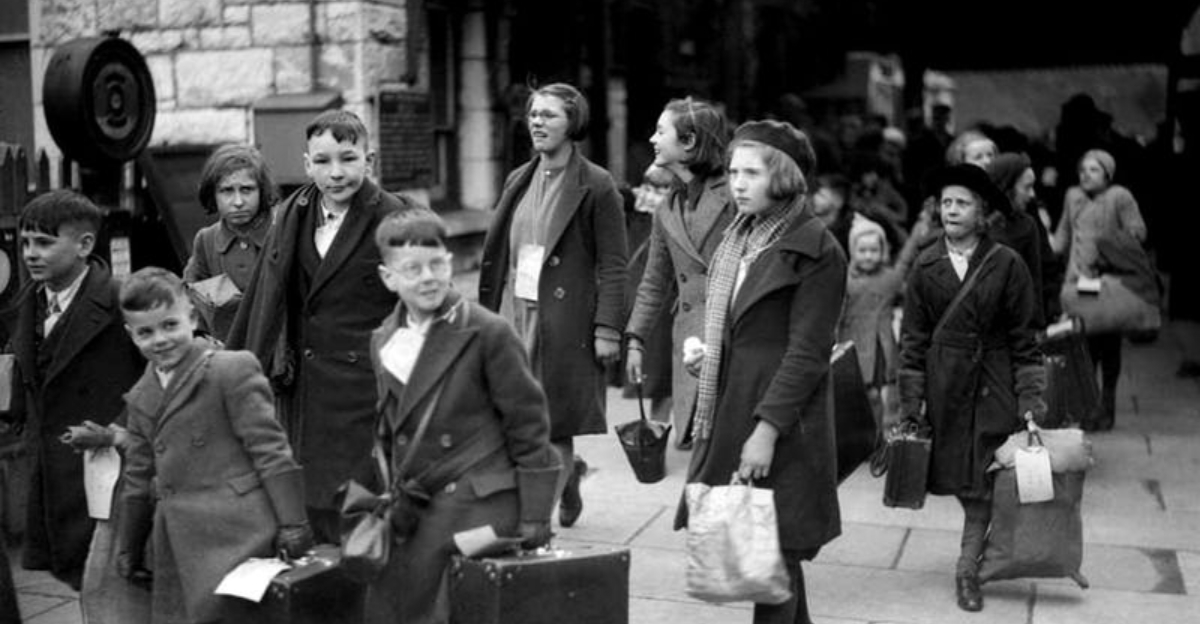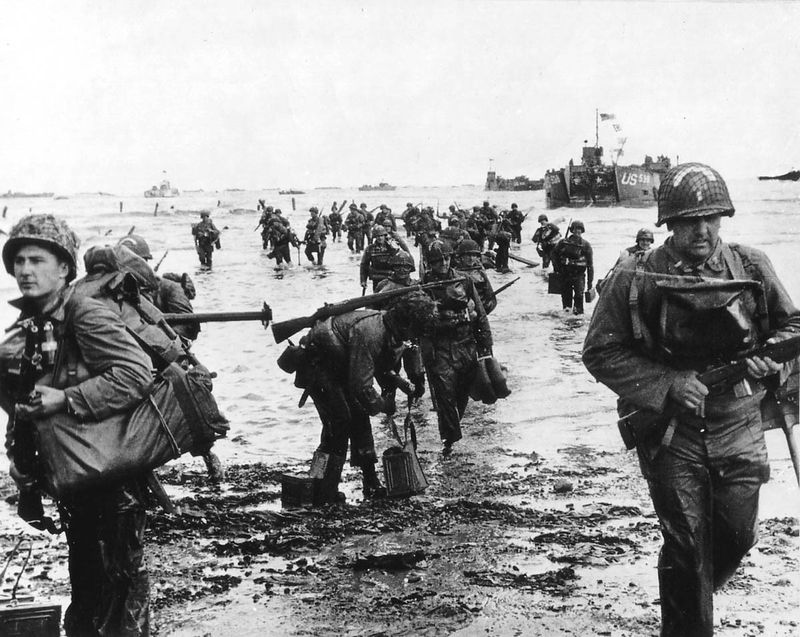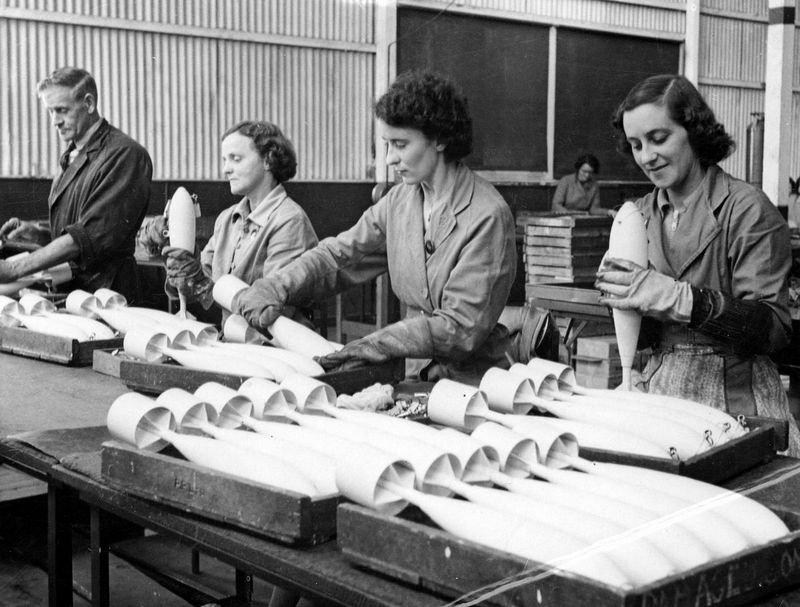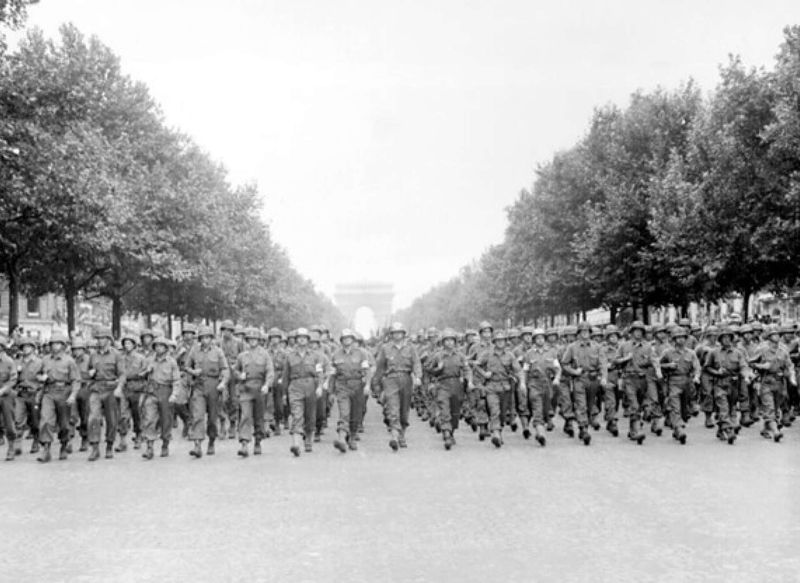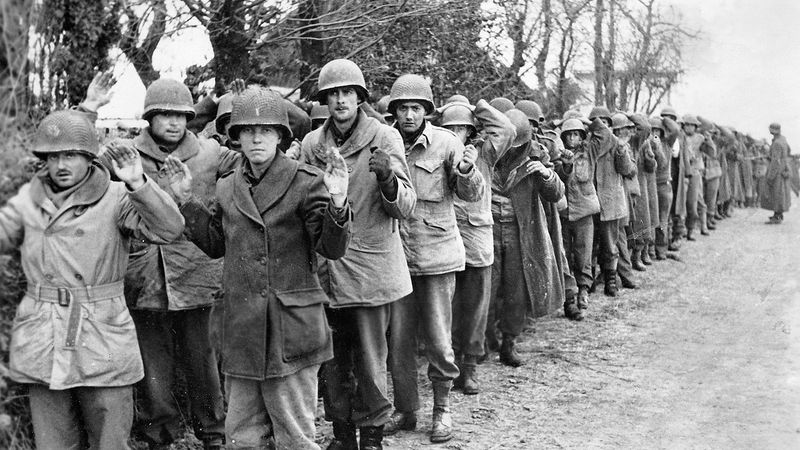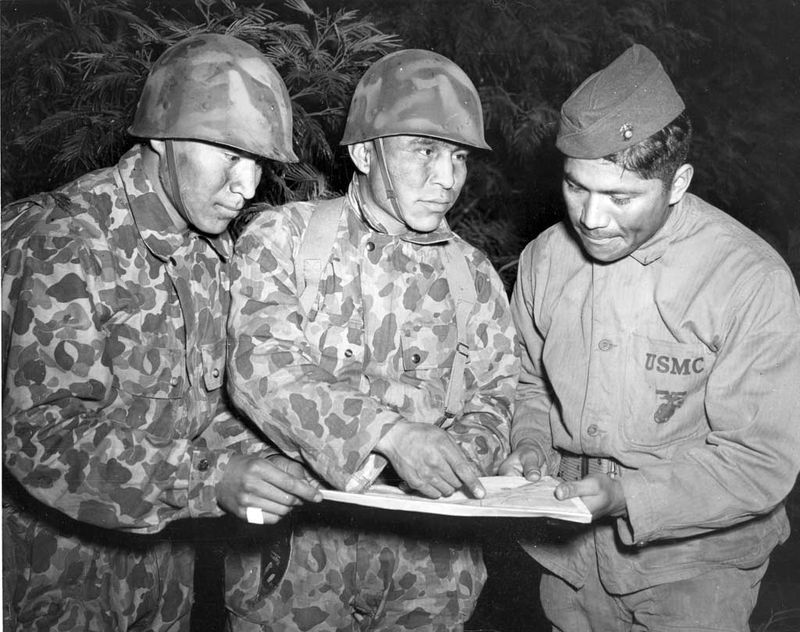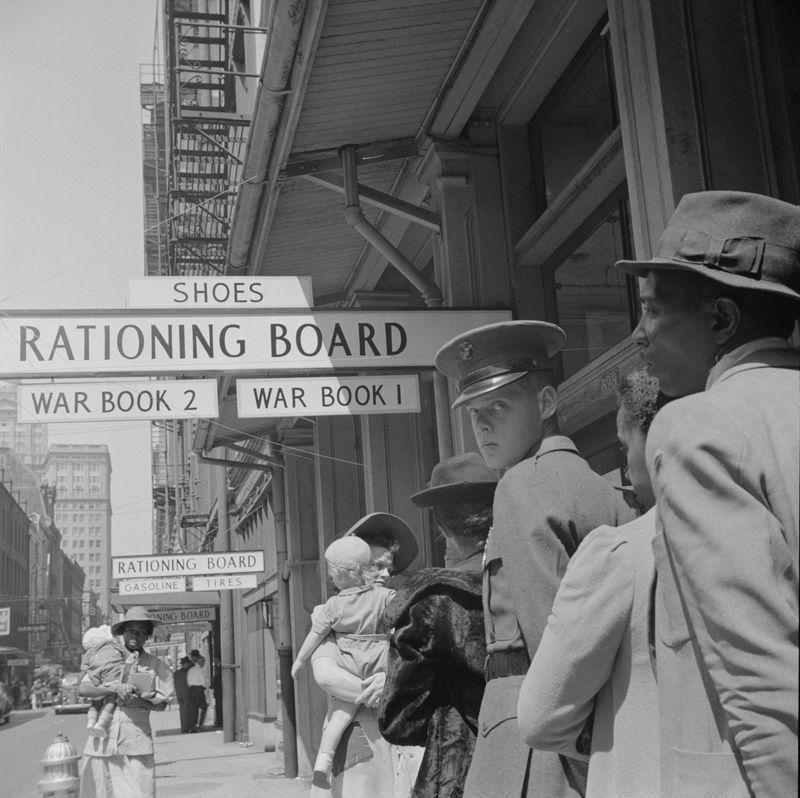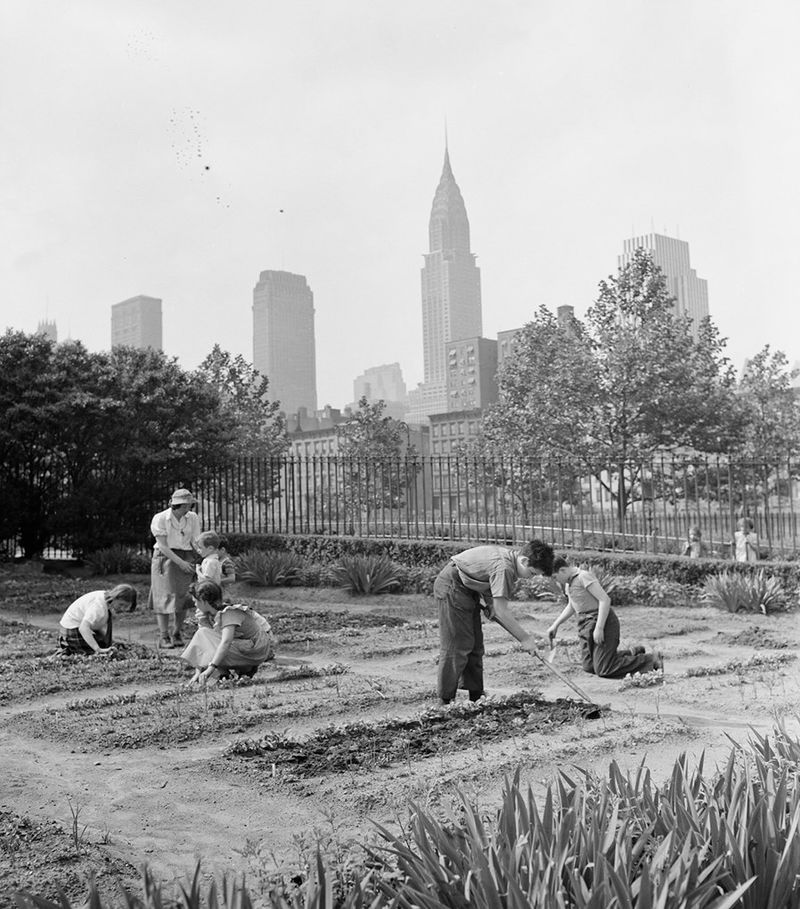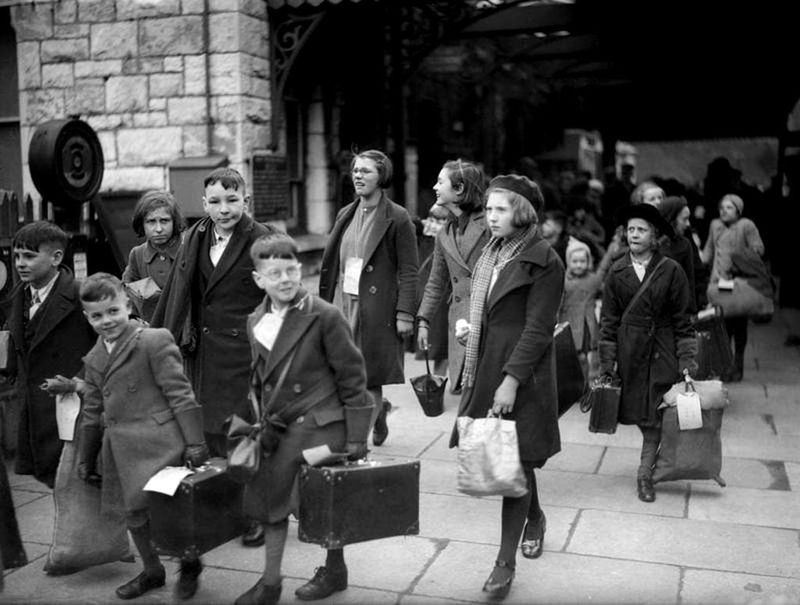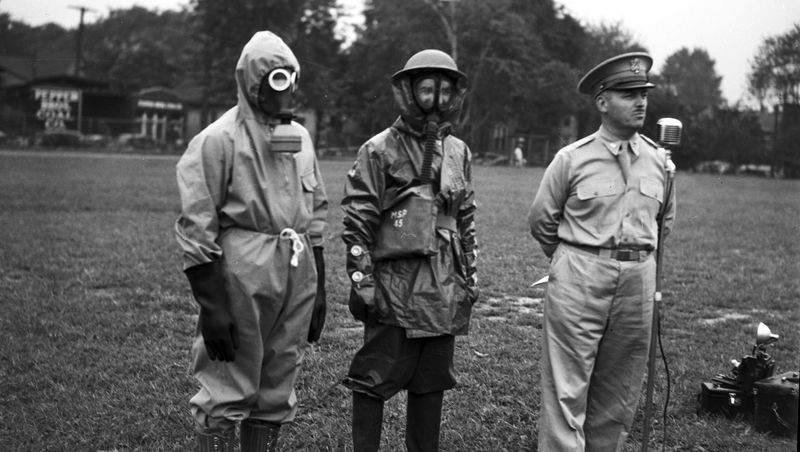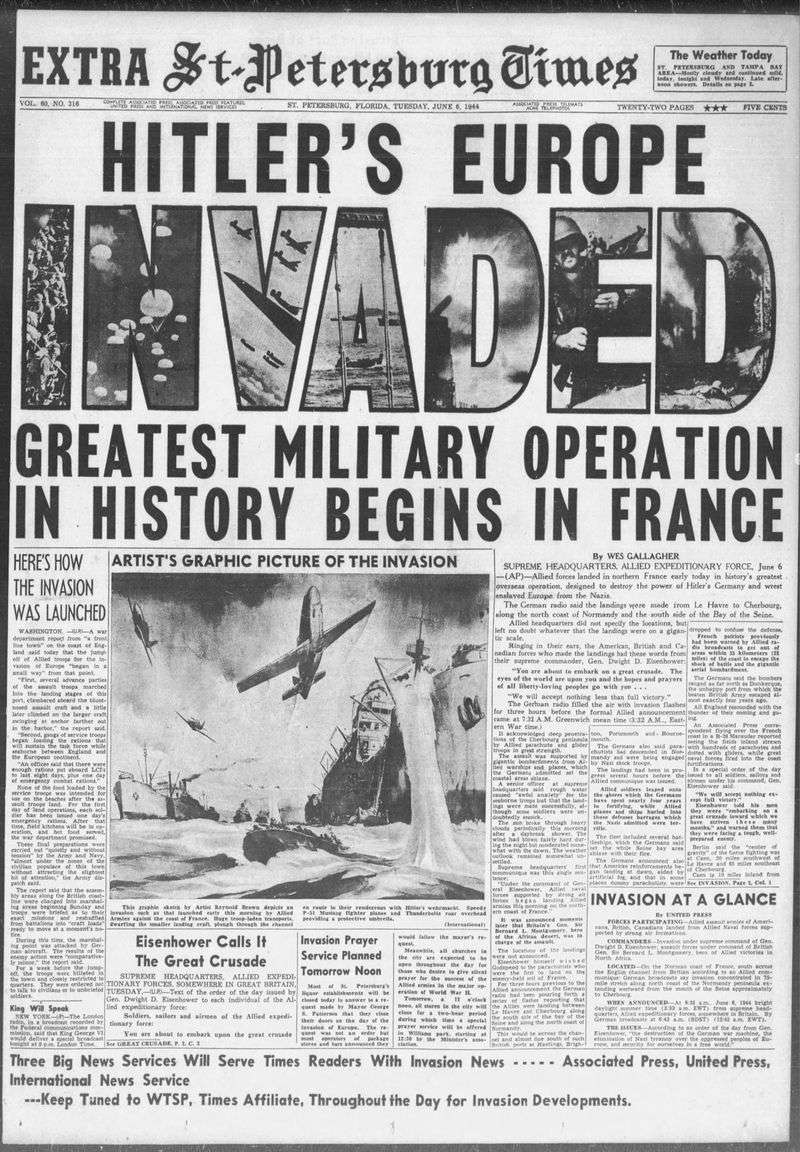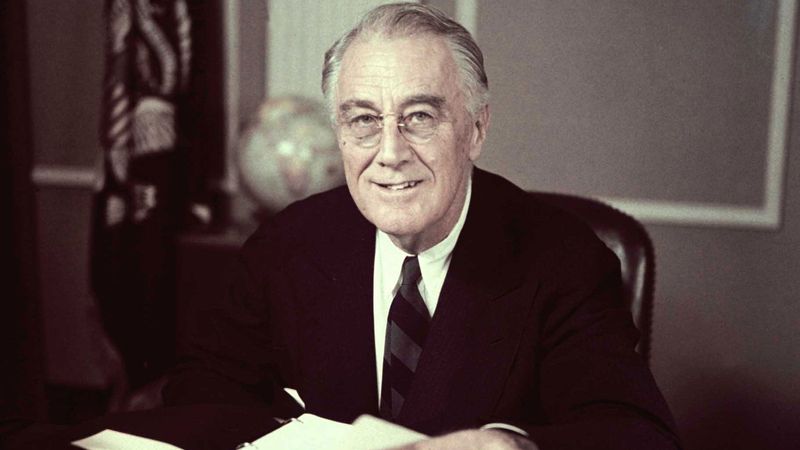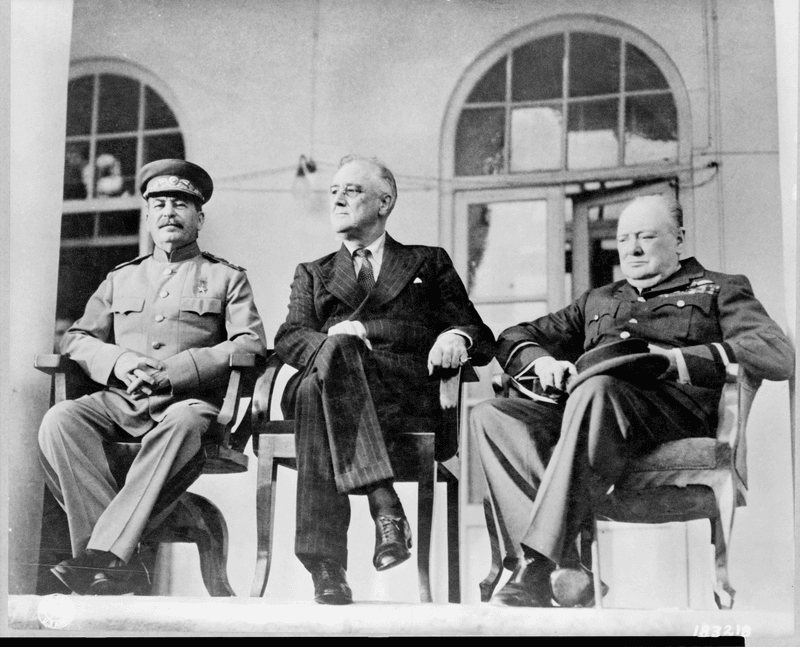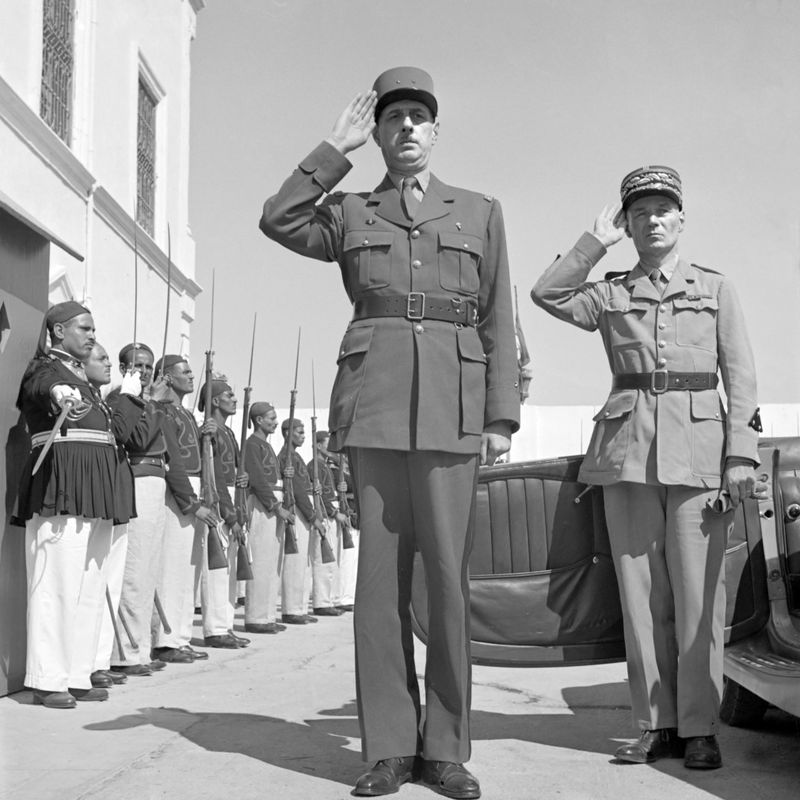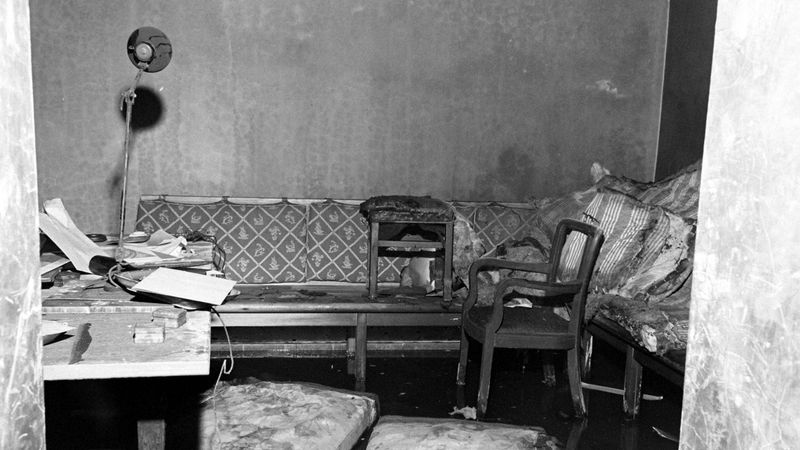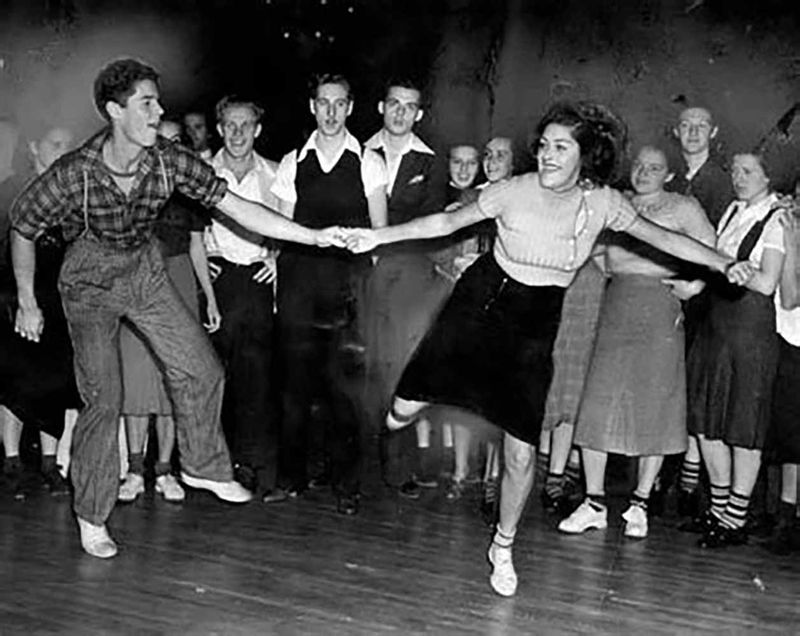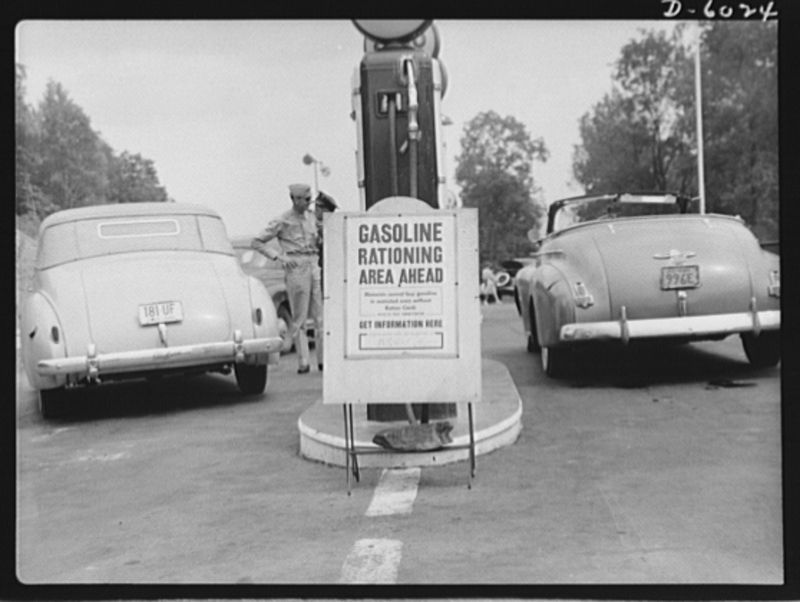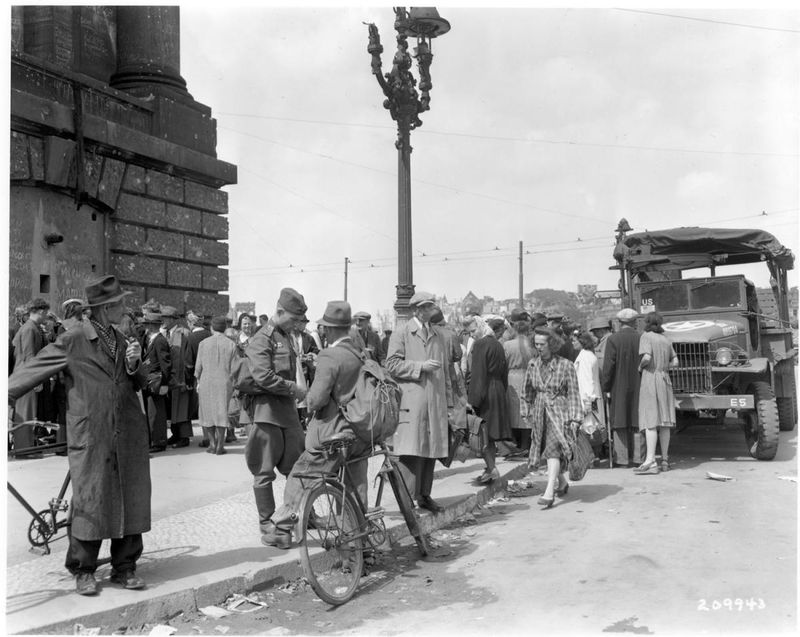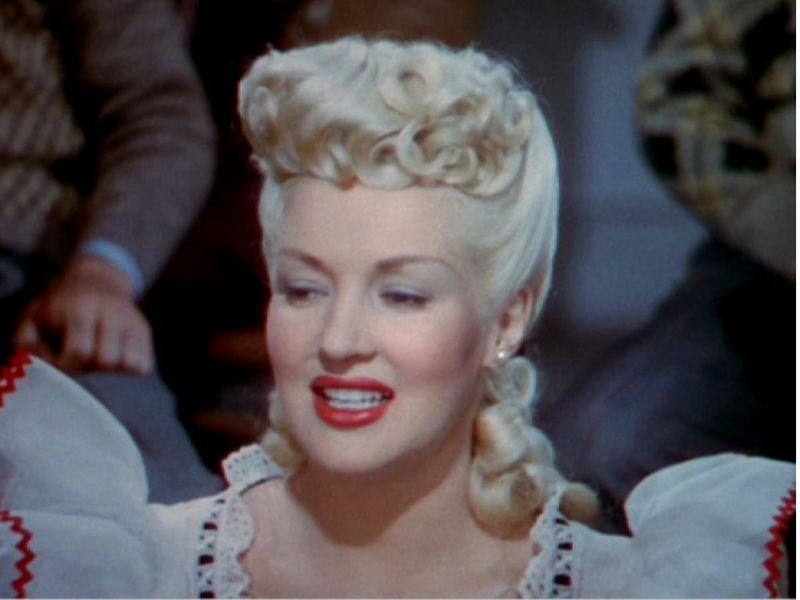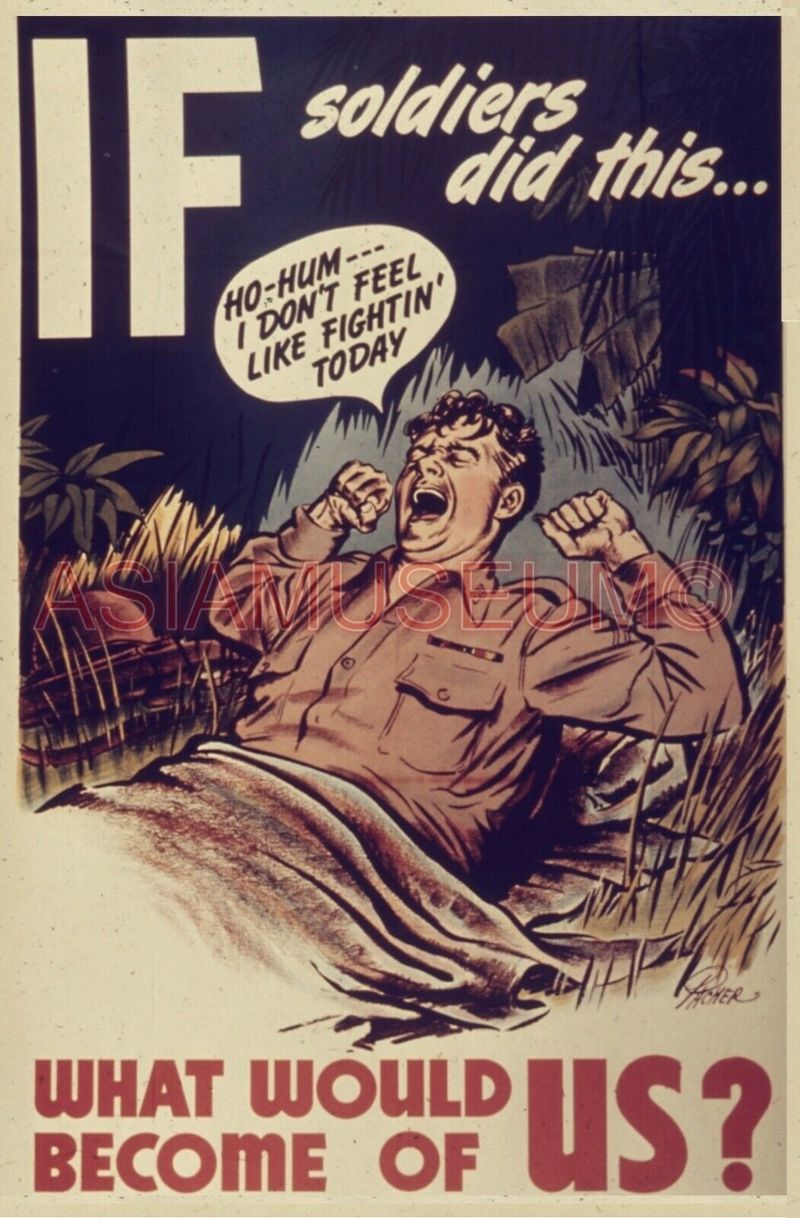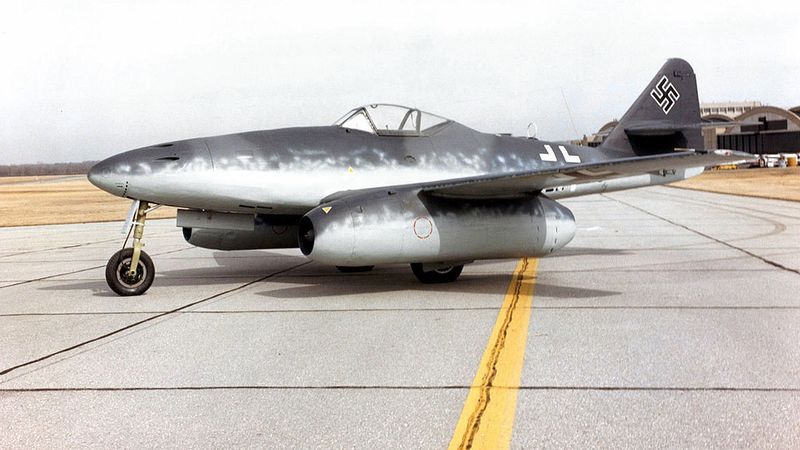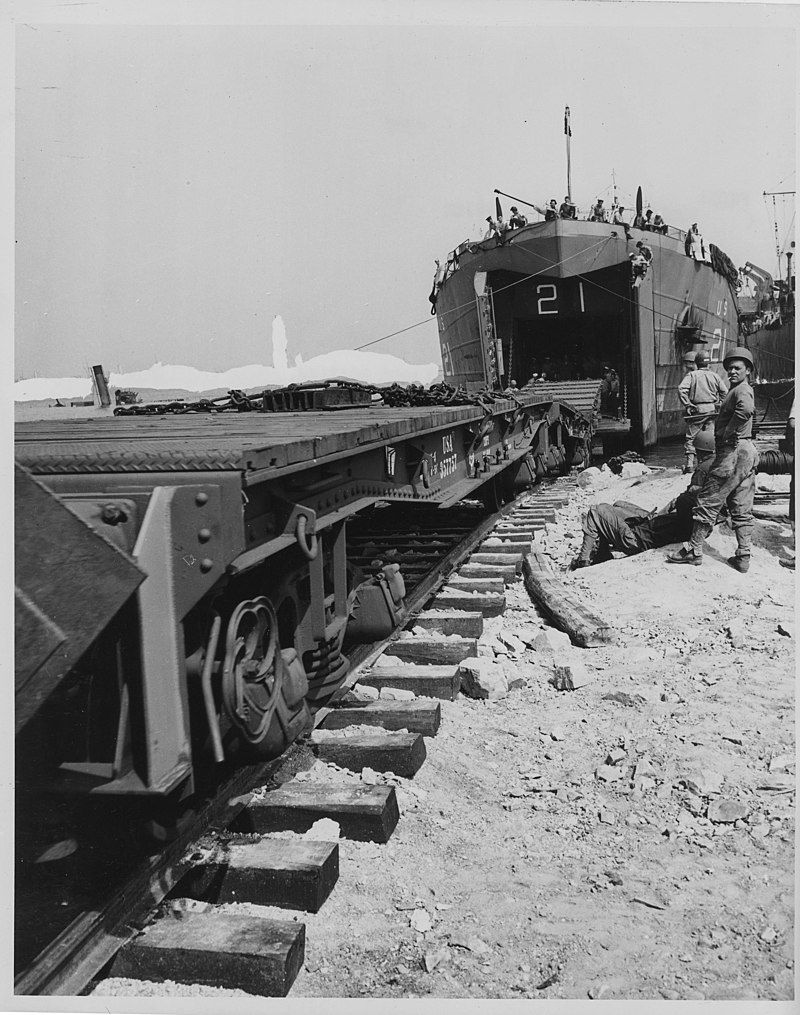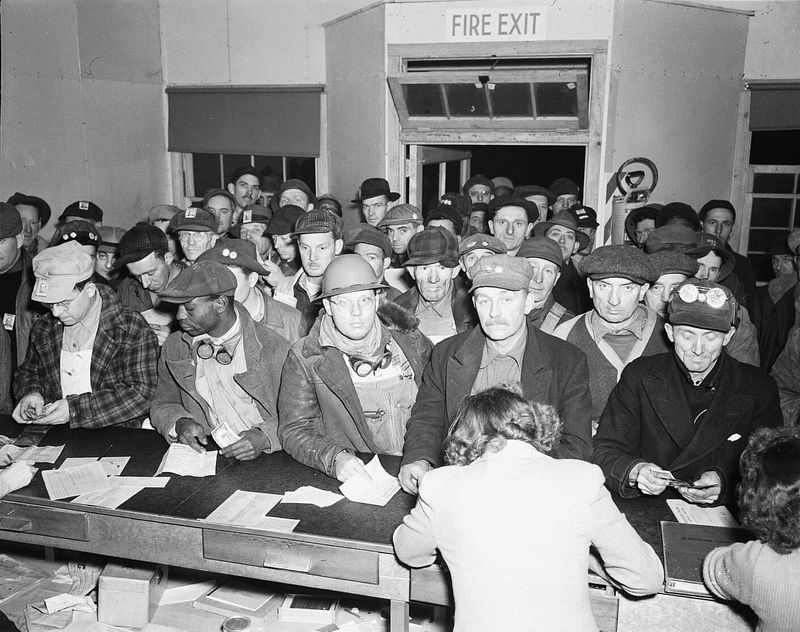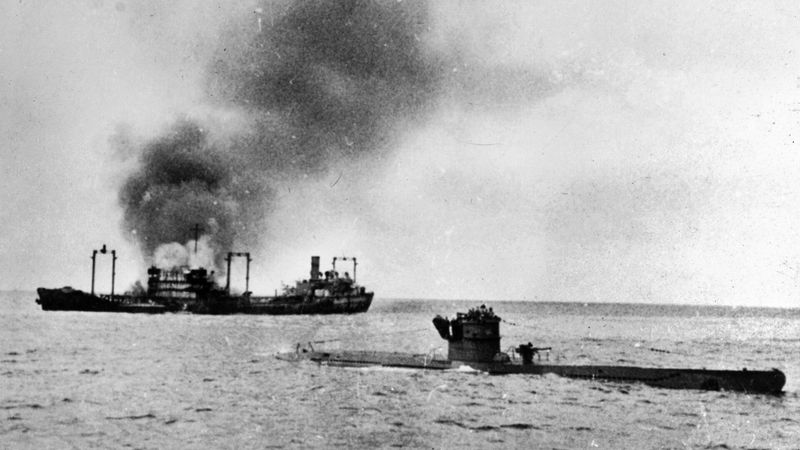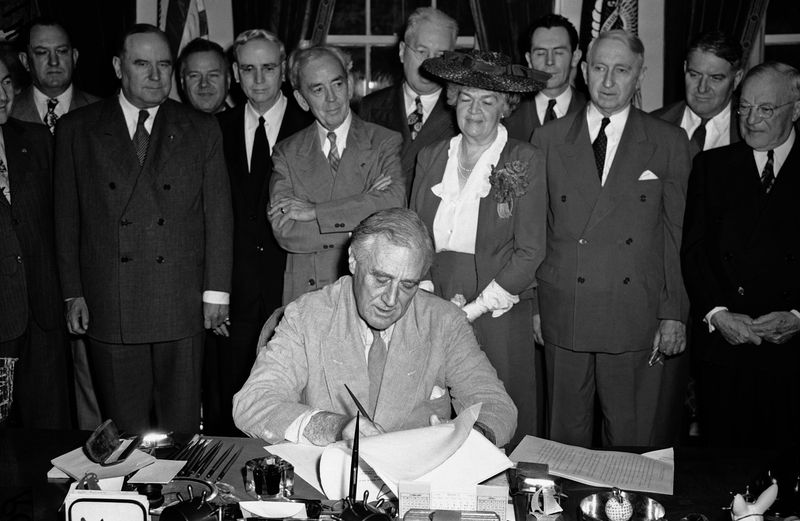In 1944, the world was captivated by powerful events that transformed societies and reshaped history. These 24 striking photos provide a visual journey through a year marked by courage, resilience, and monumental change.
From the pivotal D-Day landings to the everyday lives affected by war, each image tells a story of its own. Join us as we explore these vivid snapshots that encapsulate the spirit of 1944, a year that remains etched in the annals of time.
1. D-Day Landings at Normandy
The D-Day landings on June 6, 1944, marked a decisive turning point in World War II. As dawn broke over the Normandy coast, waves of Allied soldiers charged the beaches under relentless enemy fire.
Their mission was daunting yet clear: to liberate Europe from Nazi occupation. The courage displayed that day remains an enduring testament to human bravery.
With the sea behind them and enemy lines ahead, these young men, many barely out of their teens, exemplified extraordinary resolve. Each step taken on that sand was a step closer to freedom for millions. This momentous event reshaped the course of history.
2. Women in War Factories
In 1944, women stepped into roles traditionally held by men, becoming the backbone of the war industry. Factories buzzed with activity as they operated heavy machinery, crafted aircraft, and assembled munitions. Their contribution was vital to the war effort.
These women, often referred to as “Rosie the Riveters,” not only broke gender barriers but also changed societal norms. They balanced work and family, proving their capabilities in challenging environments.
Their dedication and skill proved indispensable, highlighting the critical role women played in achieving victory. This era marked a significant shift in gender roles and workplace dynamics.
3. Allied Troops in Paris
August 1944 witnessed the euphoric liberation of Paris by Allied forces. After years under oppressive Nazi rule, Parisians flooded the streets to welcome their liberators. The soldiers, weary yet triumphant, marched through the city, greeted by cheers and flowers.
This joyous occasion symbolized a resurgence of hope for a free Europe. The city’s iconic landmarks witnessed jubilant celebrations, and the air was filled with the promise of a new beginning.
The liberation of Paris was not just a military victory, but a powerful moment of cultural and emotional significance for the world.
4. Prisoners of War
The harsh realities of war were starkly visible in the lives of prisoners of war held in German and Japanese camps. These individuals, captured in battle, faced daily challenges of survival, enduring deprivation and uncertainty.
Despite the bleak conditions, stories of camaraderie and resilience emerged from within the barbed wires. Prisoners found solace in shared hope and mutual support, often engaging in acts of resistance to maintain their dignity.
Their experiences, while harrowing, are a testament to the human spirit’s ability to endure and remain hopeful even in the direst of circumstances.
5. Navajo Code Talkers
The Navajo Code Talkers played a crucial role in securing Allied communications during World War II. These brave Native American soldiers used their unique language to create an unbreakable code, crucial for secure military transmissions.
Their contributions were pivotal in several key battles across the Pacific theater, including Iwo Jima. By ensuring that strategic messages remained confidential, they safeguarded troop movements and operational plans from enemy interception.
These unsung heroes showcased the power of linguistic diversity and cultural heritage in the most extraordinary way, altering the course of military history with their invaluable service.
6. Ration Lines and War Bonds
As the war effort intensified, everyday life on the home front was marked by sacrifices and solidarity. People stood in long ration lines to secure essentials like food and clothing, with ration books dictating their purchases.
War bonds were heavily promoted, urging citizens to invest in the nation’s future. These bonds not only financed military operations but also fostered a collective sense of purpose.
Through these efforts, communities united, finding strength in shared sacrifice. The period reflected the resilience and adaptability of civilians who played a crucial part in supporting the war from afar.
7. Victory Gardens
Victory Gardens became a symbol of self-reliance and community spirit during wartime. Families transformed their backyards into vegetable plots, growing their own food to alleviate pressures on public supply.
These gardens were not only practical but also served as morale boosters, fostering a sense of achievement and contribution. Neighbors often exchanged gardening tips and produce, strengthening communal bonds.
The initiative underscored the importance of resourcefulness and cooperation, as people adapted to the constraints of war. Victory Gardens left a lasting legacy of local sustainability and collective effort for the greater good.
8. Evacuation of London Children
During the height of World War II, the evacuation of London children to the countryside was a heart-wrenching yet necessary measure. The city faced relentless air raids, making it unsafe for the young.
Children, often clutching teddy bears and wearing labels with their details, embarked on trains to rural areas, leaving behind familiar surroundings and family. This massive evacuation effort, known as Operation Pied Piper, aimed to safeguard the future generation.
Despite the anxiety and separation, many children found refuge and new opportunities in their temporary homes, showcasing remarkable adaptability and resilience.
9. Air Raid Drills
Air raid drills became a routine part of civilian life during the war, reflecting the ever-present threat of enemy bombings. In cities across Europe, sirens would wail as people swiftly moved to designated shelters.
These drills were vital in preparing the populace for potential attacks, instilling a sense of readiness and discipline. Civilians donned helmets and gas masks, practicing under the guidance of air raid wardens.
The experience, though daunting, unified communities under a common cause. Such preparedness emphasized the importance of vigilance and collective effort in ensuring safety during turbulent times.
10. Newspaper Headlines Announcing D-Day
The morning of June 7, 1944, was marked by the electrifying news of the D-Day invasion reaching the public. Newspaper headlines screamed the monumental event, capturing the world’s attention and hope for a turn in the war.
In bustling cities, newsboys shouted the headlines, while people eagerly grabbed copies to read details of the Allied forces’ bravery. This momentous announcement brought a mix of anxiety and optimism, as families hoped for the safe return of loved ones involved in the operation.
The headlines symbolized a collective breath held in anticipation of freedom’s promise.
11. Franklin D. Roosevelt’s Fourth Term
In November 1944, Franklin D. Roosevelt won an unprecedented fourth term as President of the United States. Despite his declining health, his leadership during the war garnered immense public support.
Roosevelt’s vision for post-war peace and prosperity resonated with many, ensuring his continued presidency. His New Deal policies and wartime strategies had a profound impact on America’s economic and social landscape.
As the only U.S. president to serve more than two terms, his legacy remains a subject of study and admiration, reflecting his significant role in shaping modern America and the global order.
12. Winston Churchill with Allied Commanders
Winston Churchill, the indomitable British Prime Minister, stood as a central figure in Allied strategy meetings during 1944. His unyielding spirit and oratory prowess inspired both military leaders and civilians alike.
Gathered with Allied commanders, Churchill’s discussions were pivotal to orchestrating key operations, including the D-Day landings. His presence in the war room, poring over maps and charts, signified the collaborative effort needed to defeat the Axis powers.
Churchill’s leadership, marked by determination and foresight, played a crucial role in uniting nations towards the common goal of victory and liberation.
13. Charles de Gaulle Returning to Paris
In August 1944, General Charles de Gaulle’s return to Paris was a symbolic moment of French liberation. As he strode through the city, his presence reignited national pride and hope for a free France.
De Gaulle’s leadership during the French Resistance and his unwavering stance against Nazi occupation earned him a revered status. His triumphant return was celebrated by jubilant Parisians, marking the beginning of France’s journey to reclaim its sovereignty.
This pivotal event underscored the importance of national unity and resilience in the face of adversity, restoring faith in France’s future.
14. Hitler in His Bunker
As 1944 drew to a close, Adolf Hitler’s situation became increasingly desperate. Confined to his bunker in Berlin, he faced mounting pressures from advancing Allied forces on multiple fronts.
Within the confines of the bunker, Hitler’s decision-making grew erratic, as setbacks and defeats chipped away at his grip on power. The atmosphere was tense, filled with anxiety and dwindling hope among his staff.
The bunker came to symbolize the inevitable downfall of the Nazi regime, a stark contrast to the grandiose ambitions that had once fueled its rise. This period foreshadowed the war’s approaching end.
15. Swing Dancing and Jitterbug
Amidst the turmoil of war, swing dancing and jitterbug offered a joyous escape for soldiers and civilians alike. Dance halls across the U.S. and Europe buzzed with the infectious rhythm of jazz and big band music.
These lively dances, characterized by energetic movements and improvisation, provided a sense of normalcy and connection. Young couples twirled and laughed, momentarily forgetting the uncertainties outside.
Swing dancing became a cultural phenomenon, reflecting the resilience and optimism of a generation determined to find joy despite the chaos. The era’s music and dance continue to inspire and uplift to this day.
16. Gasoline Rationing
During World War II, gasoline rationing was a common experience as fuel was diverted to support military efforts. Drivers received ration stamps, dictating their fuel allowances, and had to plan their journeys carefully.
This restriction led to increased carpooling and the use of alternative transportation methods. Gas stations displayed signs indicating ration limits, and attendants played a crucial role in enforcing these rules.
The rationing system highlighted the interconnectedness of civilian life and military needs, fostering a culture of conservation and resourcefulness. It was a testament to the collective sacrifices made for the war effort.
17. Black Market Trading
The constraints of wartime rationing gave rise to black market trading, a clandestine network where rationed goods like food, clothing, and fuel were exchanged. People sought alternative means to meet their needs.
This underground economy thrived on secrecy and trust, with participants risking penalties if caught. The black market highlighted the lengths to which individuals would go to circumvent shortages, reflecting the challenges of wartime living.
These covert operations underscored the resilience and ingenuity of those striving to maintain a semblance of normalcy amidst restrictions, albeit at the fringes of legality.
18. Popular Hollywood Stars
Hollywood played a pivotal role in boosting morale during World War II, with stars like Betty Grable and Humphrey Bogart captivating audiences. Their films offered much-needed escapism, transporting viewers away from the harsh realities of war.
Betty Grable, famous for her iconic pin-up photo, became a symbol of beauty and hope for soldiers overseas. Meanwhile, Humphrey Bogart’s rugged charm graced the silver screen, embodying resilience and determination.
Together, these stars represented the allure and optimism of Hollywood’s golden era, providing comfort and distraction through their captivating on-screen personas.
19. War Comics and Propaganda Posters
War comics and propaganda posters became powerful tools in rallying support for the Allied cause. These vibrant visuals depicted heroic soldiers, patriotic themes, and enemy caricatures, capturing the public’s imagination.
Comics provided entertainment and inspiration, often featuring brave characters overcoming adversity. Meanwhile, propaganda posters urged citizens to contribute through war bonds, rationing, and volunteering.
These creative mediums effectively communicated important messages, fostering unity and determination. They served as a constant reminder of the collective effort required to achieve victory, leaving a lasting impact on cultural and historical narratives of the era.
20. The First Jet Fighter in Action
In 1944, the Messerschmitt Me 262 made history as the world’s first operational jet fighter. Developed by Germany, this advanced aircraft represented a significant technological leap in aviation.
The Me 262’s speed and agility presented a formidable challenge to Allied pilots, although production delays and fuel shortages hindered its effectiveness.
Despite its limited impact on the war’s outcome, the jet fighter showcased the potential of jet propulsion and influenced post-war aircraft development. This innovation marked a turning point in aerial combat, paving the way for future advancements in military aviation technology.
21. Trains Filled with Troops
Troop trains became a common sight as soldiers were transported across countries to various fronts. These packed trains, filled with young men heading into battle, symbolized the immense scale of the war effort.
As they departed bustling stations, soldiers waved to civilians, sharing bittersweet farewells with loved ones. The journeys were filled with camaraderie and anticipation, as well as the sobering realization of the challenges ahead.
Troop trains underscored the logistical complexities of wartime mobilization and the sacrifices made by those who served. They carried the hopes and determination of nations striving for victory.
22. The Manhattan Project
The Manhattan Project, shrouded in secrecy, was a monumental scientific endeavor that led to the development of the atomic bomb. In 1944, scientists across the United States collaborated to unlock the mysteries of nuclear fission.
Working under intense pressure and confidentiality, these scientists laid the groundwork for a new era in warfare. The project’s success would eventually bring about the war’s end, forever altering the geopolitical landscape.
This groundbreaking research, while controversial, demonstrated the profound impact of scientific innovation and collaboration on global events, raising ethical and existential questions that continue to resonate.
23. U-Boats and Naval Battles
The Atlantic warfront was characterized by relentless naval battles, with German U-Boats posing a significant threat to Allied shipping routes. These stealthy submarines operated beneath the ocean’s surface, evading detection while targeting convoys.
Allied forces responded with improved anti-submarine tactics, engaging in cat-and-mouse battles that tested naval prowess. The struggle for control of the Atlantic was crucial in ensuring the flow of vital supplies and reinforcements.
U-Boats, with their silent menace, highlighted the strategic importance of naval warfare and the ongoing battle to secure the seas in pursuit of victory.
24. GI Bill Signed Into Law
The signing of the GI Bill in 1944 marked a transformative moment for returning soldiers, offering them unprecedented educational opportunities. This landmark legislation provided funds for college tuition, housing, and vocational training.
The GI Bill empowered countless veterans to pursue higher education and build new careers, reshaping the American workforce and economy. It also played a significant role in democratizing education, opening doors for a broader demographic.
The lasting impact of the GI Bill is evident in the prosperity and growth it fostered, symbolizing gratitude and support for those who served.
